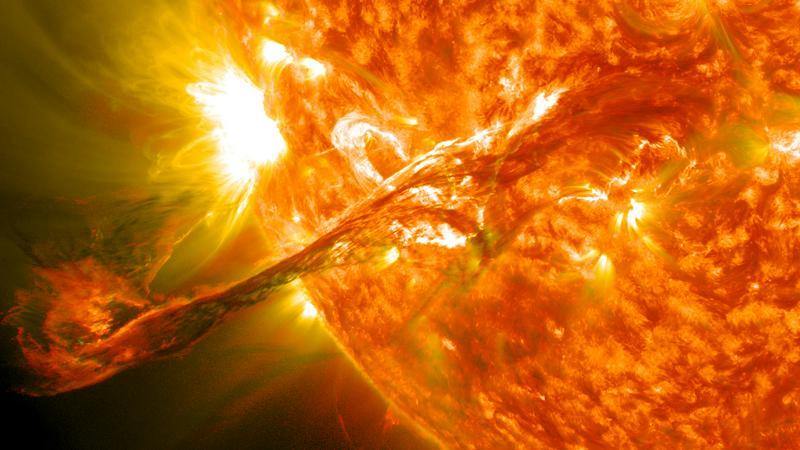The 1859 Carrington Event
By | October 5, 2019

There is no denying that the ability of the Earth to sustain life is dependent on the sun - without it, the Earth would be nothing but a frozen rock. However, the sun also has the ability to destroy that life. If the sun were to die, as stars do, it would first become a red giant and expand, either pushing the Earth out of orbit or consuming it. But that is unlikely to happen any time soon. In the meantime, the sun will just have to settle for creating chaos by occasionally emitting solar flares strong enough to disrupt communications systems and power grids.
That’s exactly what happened on September 1, 1859. At approximately 11:18 that morning, amateur astronomer Richard Carrington was viewing the sun through the use of a telescope which projected the image onto a white card. He had just begun to sketch a cluster of dark spots when two bright, white lights erupted from them. They were gone within a few minutes but their effects would last for days. He initially believed his equipment was defective but he would soon learn otherwise.

The solar flare witnessed by Carrington was one of many to occur that week. Clusters of sunspots had been appearing since August 28 of that year, resulting in the auroras being stronger and at a lower altitude than normal. This was an indication that the sunspots had released a coronal mass ejection, which is basically a cloud of plasma, the results of which would be felt days later. However, the CME released by the flare Carrington witnessed reached the Earth in less than eighteen hours.

It began with the failure of telegraph communications systems across the globe. In some places, there were reports of telegraph operators getting shocked and paper catching fire as sparks were emitted from their machines. A few clever operators managed to continue sending messages by removing the batteries from their machines and using the current provided by the geomagnetic storm instead. Meanwhile, the auroras could be seen as far as the tropics and were so bright that workers in South Carolina got out of bed in the middle of the night and began work, believing it to be morning. Birds were also confused and began chirping. In Boston, people were reading newspapers outside at midnight.

As with any unexplained natural phenomena, rumors of the end of the world abounded, particularly after one witness described the blood-red eastern sky which reflected on the water around Sullivan’s Island in South Carolina and made it appear as if the water had turned to blood. But Carrington recognized the cause of the chaos. He’d witnessed a solar flare with the power of ten billion atomic bombs. The massive CME overwhelmed Earth’s magnetic field, releasing its energy back to Earth. The geomagnetic storm, which came to be known as the Carrington Event, lasted for two days and remains the strongest geomagnetic storm on record.

In 2012, the sun emitted yet another “Carrington class” CME which was just nine days off from intersecting with Earth’s orbit. In today’s age of technology, the results of such an impact would be devastating. The following year, Lloyd’s of London conducted a study to determine the economic impact of a Carrington-level event in modern society. They estimated $2.6 trillion in grid damages and power outages lasting as long as two years.

